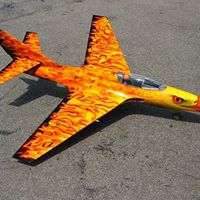Brian D Mariani
age ~74
from Herndon, VA
- Also known as:
-
- Brian Dr Mariani
- Brian Daniel Mariani
- Brian M Mariani
- Brain D Mariani
- Brinn D Maciani
- Deborah Cronshaw
- Phone and address:
-
3179 Kinross Cir, Herndon, VA 20171
5712037989
Brian Mariani Phones & Addresses
- 3179 Kinross Cir, Herndon, VA 20171 • 5712037989 • 7034817989
- Watertown, MA
- 10 Southampton Ave, Philadelphia, PA 19118
- Cocoa Beach, FL
- Norton, OH
Name / Title
Company / Classification
Phones & Addresses
Sales Director, Director Sales, Principal
Atlantis Technology
Internet · Prepackaged Software · Computer Systems Design Svcs
Internet · Prepackaged Software · Computer Systems Design Svcs
1620 Sudbury Rd STE 1, Concord, MA 01742
9783410999
9783410999
Principal
Advanced Genomics Technology Center
Business Services
Business Services
3007 Williams Dr, Fairfax, VA 22031
Resumes

Co-Owner And Chief People Officer
view sourceLocation:
3179 Kinross Cir, Herndon, VA 20171
Industry:
Transportation/Trucking/Railroad
Work:
Asea Sep 2012 - Sep 2015
Associate
2 Guys and A Blue Goose Landscaping May 2002 - Sep 2008
Owner
Gentle Giant Moving Co. May 2002 - Sep 2008
Manager
The Center For Functional Nutrition May 2002 - Sep 2008
Co-Owner and Chief People Officer
Associate
2 Guys and A Blue Goose Landscaping May 2002 - Sep 2008
Owner
Gentle Giant Moving Co. May 2002 - Sep 2008
Manager
The Center For Functional Nutrition May 2002 - Sep 2008
Co-Owner and Chief People Officer
Education:
University of Massachusetts Amherst 2010 - 2012
Bachelors, Bachelor of Science, Political Science and Government, Political Science, Government Green Mountain College 2006 - 2008
Bachelors, Bachelor of Science, Political Science and Government, Political Science, Government Green Mountain College 2006 - 2008
Skills:
Public Speaking
Customer Service
Social Media
Team Building
Social Media Marketing
Leadership
Strategic Planning
Public Relations
Marketing
Coaching
Sales
Management
Customer Service
Social Media
Team Building
Social Media Marketing
Leadership
Strategic Planning
Public Relations
Marketing
Coaching
Sales
Management

Brian Mariani
view source
Brian Mariani
view sourceUs Patents
-
Enterovirus Primers And Probes
view source -
US Patent:20050239055, Oct 27, 2005
-
Filed:Apr 22, 2004
-
Appl. No.:10/829474
-
Inventors:Brian Mariani - Herndon VA, US
-
International Classification:C12Q001/70
C12Q001/68
C07H021/04 -
US Classification:435005000, 435006000, 536023720
-
Abstract:The present invention provides methods, primers and probes for the detection of enteroviral nucleic acids in biological fluids and tissue. In the methods of the invention, at least a portion of enteroviral nucleic acid present in a biological sample suspected of containing an enterovirus is amplified and the amplified enteroviral nucleic acid is then detected. Detection may be accomplished by conventional separation techniques such as gel electrophoresis or by hybridization of at least a portion of a nucleotide probe comprising a nucleotide sequence complementary to the amplified enteroviral nucleic acid. Preferably, enteroviral RNA is detected in a biological sample using real-time PCR techniques that can detect the increasing presence of an amplification product while amplification occurs.
-
Hsv-1 And Hsv-2 Primers And Probes
view source -
US Patent:20060141481, Jun 29, 2006
-
Filed:Dec 27, 2004
-
Appl. No.:11/020676
-
Inventors:Brian Mariani - Herndon VA, US
-
International Classification:C12Q 1/70
C12Q 1/68 -
US Classification:435006000, 435005000
-
Abstract:The present invention provides methods, primers and probes for the detection of HSV nucleic acids in biological fluids and tissue. In the methods of the invention, at least a portion of HSV nucleic acid present in a biological sample suspected of containing an HSV-1 and/or HSV-2 is amplified and the amplified HSV nucleic acid is then detected. Detection may be accomplished by conventional separation techniques such as gel electrophoresis or by hybridization of at least a portion of a nucleotide probe comprising a nucleotide sequence complementary to the amplified HSV nucleic acid. Preferably, HSV DNA is detected in a biological sample using real-time PCR techniques that can detect the increasing presence of an amplification product while amplification occurs.
-
Amplification Based Detection Of Bacterial Infection
view source -
US Patent:56541414, Aug 5, 1997
-
Filed:Nov 18, 1994
-
Appl. No.:8/342091
-
Inventors:Brian D. Mariani - Philadelphia PA
Rocky S. Tuan - Chester Springs PA -
Assignee:Thomas Jefferson University - Philadelphia PA
-
International Classification:C12Q 168
-
US Classification:435 6
-
Abstract:A method of detecting a bacterial infection in a patient comprising obtaining a patient sample; obtaining a sample of nucleic acids from the patient sample; separating charged cellular components from the nucleic acids using a mixed bed ion exchange resin; amplifying bacterial nucleic acids in the sample; and detecting the presence or absence of amplified nucleic acids wherein the presence of amplified nucleic acids indicates a bacterial infection.
Vehicle Records
-
Brian Mariani
view source -
Address:3179 Kinross Cir, Herndon, VA 20171
-
Phone:7034817989
-
VIN:1FMHK7D98CGA51199
-
Make:FORD
-
Model:EXPLORER
-
Year:2012

Brian Mariani
view source
Brian K Mariani
view source
Brian Mariani
view source
Brian Mariani
view source
Brian Mariani
view sourceJoin Facebook to connect with Brian Mariani ...
Myspace
Other Social Networks

Brian Mariani Google+
view sourceNetwork:
GooglePlus
Brian Mariani has not filled out their profile yet.
Youtube
Googleplus

Brian Mariani
Education:
ILI

Brian Mariani

Brian Mariani

Brian Mariani

Brian Mariani
Flickr
Get Report for Brian D Mariani from Herndon, VA, age ~74














